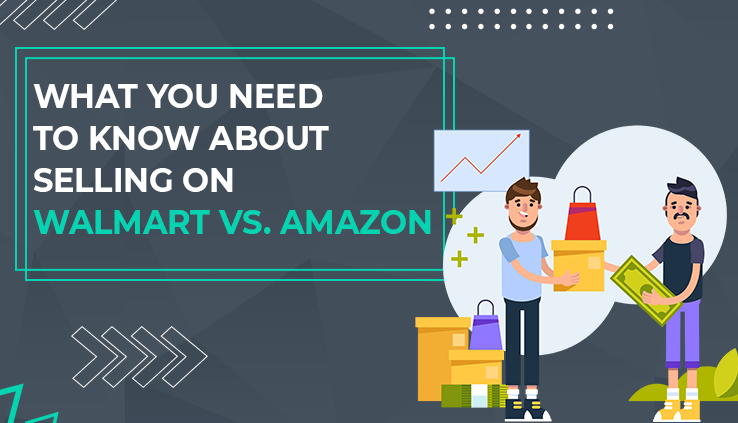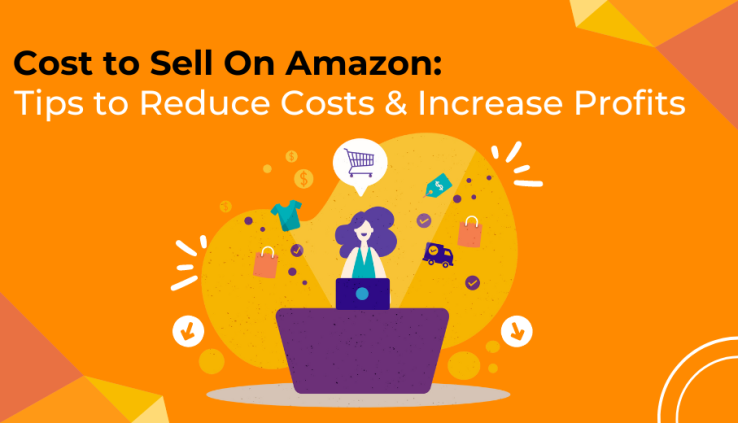In the ever-changing world of online business, picking the right platform is super important. Big players like Walmart and Amazon are key places for sellers. Knowing the ins and outs of selling on Walmart versus Amazon can affect how well your online business does. This guide covers everything, showing you what each platform is good at and where they might not be so strong. It gives you the info you need to make a smart choice that matches your business goals.
Selling on Walmart
Is It Profitable to Sell on Walmart?
Evaluating the potential profitability of entering a platform is a vital consideration for sellers. Walmart has a lot of customers and a big reach, which can be great for online businesses. But whether you make good profits depends on things like the products you pick, how you set their prices, and how much competition there is in your specific market.
Benefits of Selling at Walmart:-
- No Subscription Fees: Unlike some competitors, Walmart doesn’t burden sellers with subscription fees. This becomes a notable advantage, particularly for small businesses and those initiating their e-commerce journey.
- Low Competition: In contrast to the busy marketplace of Amazon, Walmart’s platform offers a more expansive and less congested atmosphere. This reduced level of competition becomes advantageous for newcomers seeking to establish their distinct presence in the market.
- Exposure to New Audiences: Selling on Walmart exposes your products to a different audience compared to Amazon. This fresh customer base can be a valuable asset for expanding your reach.
- Easy Checkout Process: The efficient checkout system at Walmart enhances the overall satisfaction of customers. A smooth purchasing process is known to boost conversion rates and elevate customer contentment.
Drawbacks of Selling at Walmart
- Lower Profit Margin: Despite offering exposure, Walmart may entail lower profit margins due to competitive pricing and the platform’s emphasis on delivering value to customers.
- Fewer Shoppers: Despite the growing popularity of Walmart’s online marketplace, it falls short compared to Amazon in drawing a significant number of shoppers. This could limit the overall sales potential for your products.
- Limited Fulfillment Options: Walmart has yet to match the expansive fulfillment infrastructure of Amazon, which might be a drawback for sellers dealing with high order volumes.
The Amazon Marketplace
Now that you’re familiar with the history, advantages, and disadvantages of selling on Walmart, let’s delve into the Amazon marketplace. Similar to Walmart, Amazon comes with various pros and cons that you should think about before determining if it suits your business.
Benefits of Selling on Amazon:-
- Large Customer Base: The extensive customer foundation of Amazon provides sellers with the chance to connect with millions of potential purchasers. The sheer volume of traffic significantly contributes to sales opportunities.
- Amazon FBA Option: Fulfillment by Amazon (FBA) is a special service that helps sellers use Amazon’s big network to handle orders. This makes the process of fulfilling orders easier, making customers happy.
- Also, Amazon gives sellers tools for marketing, like sponsored products and display ads. These tools help sellers promote their products well, making them more visible and increasing sales.
- Higher Profit Margin: Even if the fees for selling on Amazon are a bit high, because there are so many customers and good fulfillment options, sellers usually end up making more profit overall.
Drawbacks of Selling on Amazon
- Higher Selling Fees: Amazon enforces several charges on sellers, encompassing referral and fulfillment fees. While these fees support the platform’s comprehensive services, they may influence profit margins.
- Increased Competition: Amazon’s popularity attracts a massive number of sellers, intensifying competition across various niches. Standing out amidst this competition poses a challenge, especially for new and smaller sellers. You can take help of amazon advertising services by any third party that can get your game up and running.
- Complicated Order Management: As sales volume grows on Amazon, managing orders can become intricate. The platform’s extensive features may require a learning curve, and sellers must efficiently handle inventory, shipping, and customer service.
Factors To Consider When Selling on Walmart vs. Amazon:
- Fees: Walmart’s fee structure is generally straightforward, with no subscription fees, but potential for lower profit margins. Amazon’s fees are more intricate, involving subscription, referral, and fulfillment fees, but the larger customer base can result in higher profits.
- Profit Potential: Walmart may provide a lower profit margin due to competitive pricing. Amazon offers a higher profit margin, particularly with efficient fulfillment options and a vast customer base.
- Advertising Options: Walmart is enhancing its advertising platform, but Amazon continues to lead with strong advertising services, encompassing sponsored products and display ads.
- User-Friendliness: Walmart’s platform is recognized for its simplicity, making it easy for sellers of all sizes to use. Conversely, Amazon, with its numerous features, may be more challenging for new sellers to grasp.
Conclusion
Determining whether to list your products on Walmart or Amazon in the online selling scene involves a thoughtful evaluation of each platform based on your specific business objectives. Walmart’s absence of subscription fees and exposure to a different audience can be advantageous for certain sellers. Conversely, Amazon’s extensive customer base, FBA choices, and advertising prospects make it an attractive option for many.
In summary, the choice between Walmart and Amazon depends on your specific business requirements and priorities. Considerations such as fees, profit potential, advertising possibilities, and user-friendliness should inform this crucial decision for your ecommerce store management contact HRTECH today, we can help you with both Walmart and Amazon!





